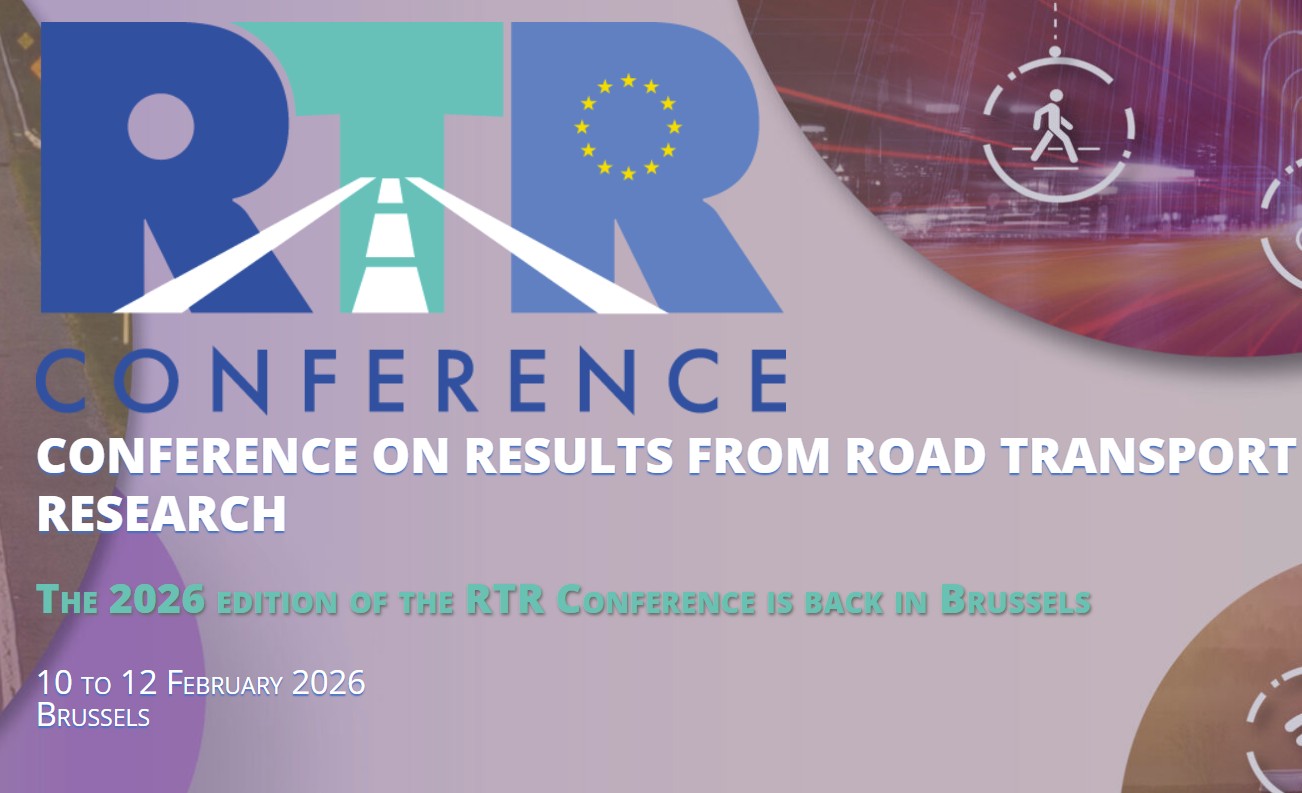Road Safety Knowledge
Road Safety Knowledge concerns published scientific papers, conference presentations, research results, technical reports, as well as syntheses, manuals and guidelines attempting to shed light into several contemporary road safety issues.

Road Design
Road interventions
Signing
Lighting
Equipment
Workzones
Junctions
Urban safety
Rural roads
Motorways
Traffic
Weather
Impact assessment
Audit & inspection
High risk sites
Safety assessment
e-safety
Safety equipment
Vehicle Inspection

Culture
Strategy
Measures
International comparisons
Data analysis
Accident severity
Driving Simulator
Naturalistic Driving
Measures Assessment
Social cost
Post impact care
Work related safety

Together for Safer Roads Global Coalition recently published a Report titled Optimizing Fleets with Telematics presenting key insights on how vehicle telematics can transform fleet safety and reduce crash risks through data-driven interventions. This Report analyzes over 60 million driving trips globally, identifying correlations between telematics-based driver monitoring and significant reductions in risky behaviors such as harsh braking and speeding. Furthermore it emphasizes the value of AI-powered analytics and proactive driver coaching in improving fleet safety performance. 

The Directorate General for Mobility and Transport (DG Move) of the European Commission recently reached a provisional agreement, aiming to modernize EU driving licence rules. Some of the changes include more systematic checks of the fitness to drive, stricter rules for novice drivers and accompanied driving schemes for 17-year old drivers. The new Directive also includes licencing rules in line with technical advancements and allowing citizens to obtain their driving licence in their home Member State under certain conditions. Finally special emphasis is placed on protecting vulnerable road users, as driver tests will require proof of awareness toward pedestrians, cyclists, and micromobility users. 

The Directorate General for Mobility and Transport (DG Move) of the European Commission recently adopted its first Progress Report on the European declaration on cycling, showing strong momentum across the EU to boost cycling infrastructure and policies. The Report confirms cycling’s role as a clean, affordable and health-boosting way to travel. It also highlights the need to improve aspects such as cycle logistics, safe parking, charging in buildings, carriage of bikes on trains, climate-proofing infrastructure and engagement with industry. Cities are stepping up cycling measures to meet the targets of the climate-neutral and smart cities mission. 
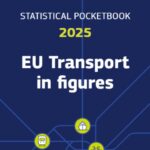
The Directorate General for Mobility and Transport (DG Move) of the European Commission released the Statistical Pocketbook 2025 “EU Transport in figures”. In this Statistical Pocketbook, key road safety Tables are contained, together with several other Tables on transport statistics, providing a complete picture of current trends in transport in Europe. Data on road fatalities for the EU Member States and associate countries allow for time series comparisons and country rankings. 


In a recently published study conducted at Stanford University (USA), using a range of parameters for each scientist’s research contribution and influence, million Scientists data from Scopus database were analyzed. According to this study 1,074 Greek scientists are contained in the global top 2%, among which 162 Scientists from the National Technical University of Athens (NTUA). 28 Scientists from the School of Civil Engineering of NTUA are among the top 2% researchers in the world (4 within the top-ten of NTUA) and 8 among the Department of Transportation Planning and Engineering (3 within the top-ten of the School of Civil Engineering) 2024: (Eleni Vlahogianni, George Yannis, Konstantinos Gkiotsalitis, Eleonora Papadimitriou, Christina Plati, Apostolos Ziakopoulos) All years: (Matthew Karlaftis†, John Golias). 
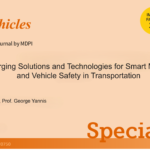
A Special Issue titled “Emerging Solutions and Technologies for Smart Mobility and Vehicle Safety in Transportation” has been recently launched on Vehicles Journal, with Guest Editors from NTUA: Dr. Eva Michelaraki and Prof. George Yannis. This Special Issue aims to present cutting-edge research on novel solutions and technological advancements in smart mobility, transportation safety, and intelligent vehicle systems. Contributions that explore data-driven approaches to traffic management, machine learning applications for driver behaviour analysis, crash prediction and prevention strategies, automation in transportation systems, and the role of connected and autonomous vehicles (CAVs) in improving road safety are welcome. Deadline for manuscript submission is until 15 December 2025. Researchers can submit their contributions here. 

NTUA is now generating a Special Issue titled “Automated Driving Systems: Latest Advances and Prospects” on Electronics Journal with Guest Editors: Dr. Eva Michelaraki and Prof. Dr. George Yannis. This Special Issue aims to bring together cutting-edge research on the latest developments, emerging trends, and future prospects in automated driving. We encourage researchers from academia and industry to explore novel methodologies and contribute their latest findings, addressing the challenges and opportunities in the deployment of fully automated driving systems. Deadline for manuscript submission is until 15 April 2026. Researchers can submit their contributions here. 
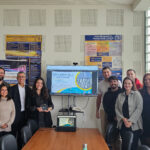
Stella Roussou, NTUA PhD Candidate & Researcher, received the Young Researcher Best Paper on Road Safety Award 2025 during the International Congress on Transport Research 2025. The Award is granted jointly by the Hellenic Institute of Transport (HIT/CERTH) and the Hellenic Institute of Transportation Engineers (HITE). The award concerned the paper titled: “Predicting Pedestrian Violations in Urban Intersections Using ANOVA and Poisson Regression ”, co-authored by Roberto Ventura, Apostolos Ziakopoulos and George Yannis. 
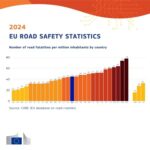
According to the latest statistics released by European Commission, in 2024 19,940 people lost their lives in road crashes across the EU representing a 2% decrease compared to 2023. The overall ranking of countries’ fatality rates has not changed significantly, with the safest roads in Sweden and Denmark while Romania and Bulgaria reported the highest fatality rates in 2024. Provisional data for the first six months of 2025 shows mixed trends across Member States. While some countries like Greece, Czechia, Estonia, Poland, Portugal, Romania and Slovakia are giving positive signals with declining fatalities, others face renewed challenges. These early indicators underscore that road safety requires constant vigilance and sustained effort. 

The EU Road Safety Exchange Project of the European Commission and the European Parliament drives adoption of proven road safety measures across Europe with the active contribution of NTUA. The EU-funded Project connected road safety experts from 19 European countries to tackle specific road safety challenges, showcase European best practice and implement practical solutions to save lives on their roads. From safer roads in Lithuania to lower speed limits in Greece, the European knowledge-sharing initiative is helping governments turn successful road safety ideas into action, making faster progress toward the EU’s goal of halving road deaths and serious injuries by 2030. 

The Council of Ministers of the International Transport Forum (ITF) recently adopted the Policy Recommendation on Comprehensive Road Safety, emphasizing on evidence-based policymaking, improved crash data systems, and risk-based prioritization of interventions where the greatest number of lives can be saved. This Recommendation further calls for safe speed management, stronger compliance and education measures and the accelerated deployment of vehicle safety technologies. ITF also encourages corporate engagement through a Global Road Safety Assessment Framework and highlights the importance of cross-government coordination to achieve lasting safety outcomes and progress toward Vision Zero. 

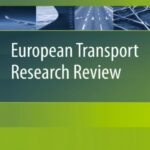
The European Transport Research Review (ETRR), a leading journal associated with the European Conference of Transport Research Institutes (ECTRI) has launched a new Thematic Collection, titled “Shaping Safer Behaviour: Evidence-Based Approaches in Transport Safety Research”. This Thematic Collection focuses on behavioural research in transport safety, highlighting evidence-based approaches to measure, model, and influence road user behaviour as a means to improve safety in evolving urban and technological contexts. It will bring together contributions that apply advanced tools such as Virtual Reality, Machine Learning, behavioural modelling, and simulation to real-world challenges, including the protection of vulnerable road users, the impacts of urban transformation projects, and the monitoring of safety progress through Key Performance Indicators (KPIs). Overall, this timely and impactful collection aims to spotlight innovative, data-driven strategies that promote safer mobility across Europe and beyond. Submissions are open until 31 March 2026. 


NTUA organized with great success the “Researcher’s Night” science fair, which took place in Athens, Greece on 26 September 2025. The IVORY project was showcased in this Event, presenting its overall research goals and activities to young students from primary and secondary schools, as well as fellow NTUA and Athens university researchers and faculty. In parallel, the NTUA IVORY DCs had the opportunity to engage with visitors and present their individual doctoral research progress, with several contributions  :
:
- Julia Porto – Proactive risk mapping and infrastructure safety management
- Aristotelis Tsoutsanis – Data fusion of traffic, behaviour & infrastructure for holistic driver assistance
- Simone Paradiso – AI for road safety monitoring and crash prediction from micro- to macro levels
- Aristotelis Styanidis – Road safety prediction on the basis of ethically sound physiological measurements
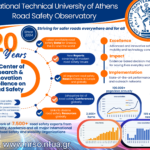
The NTUA Road Safety Observatory (www.nrso.ntua.gr) achieved its 20 years of continuous efforts towards scientific evidence in decision making for safer roads everywhere and for all. The nrso scientific team with high dedication, efficiency and expertise continues to grow and excel, with a rich and high quality scientific output of more than 1,000 road safety scientific Papers published (280+ in peer reviewed journals), hundreds of scientific Reports, 750+ presentations in scientific conferences, almost 200 Diploma Theses and 20 PhD dissertations. Over the past two decades, the NRSO portal has steadily expanded its contents, reach, visibility and impact, containing today more than 2.500 road safety items (25+ items per month), attracting over 100,000 pageviews annually, through its wide network of hundreds of Authorities, Research, Industry and Society partners worldwide and the 157 newsletters so far, reaching monthly more than 7.500 road safety experts worldwide. With great thanks to the NRSO dedicated scientists and all our great partners, the exciting journey towards scientific excellence continues … 
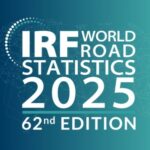
The International Road Federation (IRF) released the 62nd edition of the IRF World Road Statistics 2025 (WRS2025), with data open to all for free through the IRF WRS Data Warehouse platform, thanks to the generous support of the TotalEnergies Foundation and Michelin Corporate Foundation. The IRF WRS 2025 continues to be the major comprehensive, universal source of statistical data on road networks, traffic and inland transport, including traffic crashes. This year the WRS 2025 includes the latest data covering years 2018 to 2023, with the active contribution of NTUA for the Greek data. It includes over 200 road and transport-sector related indicators across 11 sections, covering more than 200 countries and territories. 

A paper titled Advancing traffic microsimulation: a systematic review of parameter selection for connected and autonomous vehicles authored by Maria G. Oikonomou, Apostolos Ziakopoulos and George Yannis has been published in Journal of Simulation. This paper presents a systematic review of 54 studies to consolidate key parameters for modelling Autonomous Vehicles and Connected and Autonomous Vehicles in traffic microscopic simulations. The integration of CAV is anticipated to transform transportation by enhancing traffic flow, safety and system efficiency. By comparing them to those used for human-driven vehicles, valuable insights are provided, including statistical summaries and boxplots, to inform the enhancement of simulation models. The findings provide a resource for researchers, supporting direct integration and refinement of AV/CAV parameters to improve the accuracy and reliability of future traffic simulations. 

The Horizon Europe research project IMPROVA has recently released its 2nd Newsletter, focusing on enhancing road safety by addressing the complexities of long-term consequences (LTC) caused by road traffic crashes. In its first year, IMPROVA has made significant strides in understanding and assessing the long-term consequences (LTC) of road traffic accidents. These actions align with our core research questions and lay the foundation for innovative tools, methodologies, and policy recommendations. 

A NTUA Diploma Thesis titled “The impact of physical fitness on road safety and driver behaviour on rural roads” was recently presented by Marina Karachalia. For this reason an experimental procedure involving 46 participants aged 19–27 was conducted. The participants were evaluated in terms of their cardiorespiratory fitness through the Maximal Oxygen Uptake index (VO₂max), while also completing a related questionnaire. VO₂max was calculated based on heart rate (BPM – Beats Per Minute) after recovery from a short physical activity and then were categorized into two fitness groups: high fitness and low fitness, based on established VO₂max classification thresholds. The data was analyzed using linear and logistic regression models. Results suggest that high-fitness drivers have longer reaction times, greater variability in headway distance, higher average speeds, and, conversely, a lower probability of road accident involvement. Overall, higher physical fitness appears to be associated with more stable and controlled driving behavior, which, despite the increased reaction time, may contribute to reduced accident risk through improved decision-making. 


A NTUA Diploma Thesis titled “Investigation of Illegal Pedestrian Crossings in the Center of Athens” was recently presented by Marianthi Alverti. For this purpose a Stated Preference (SP) survey was structured in order to examine decision-making scenarios based on varying conditions of travel time, perceived crash risk, and personal comfort, with a dataset of of 212 responses. The analysis utilized binary logistic regression to examine the likelihood of illegal crossing, and generalized linear model to investigate the trade-offs pedestrians make between safety, time, and convenience given three different scenarios of camera use, traffic light with timer, and the baseline scenario to choose from. The models highlight the influence of time pressure, traffic conditions, and social components on individual decisions. The findings aim to showcase the importance of pedestrian decisions to prevent the likelihood of a road crash and, in this way, support more behavior-aware policy design, ultimately contributing to safer urban mobility systems. 


A NTUA Diploma Thesis titled “Investigation of Non-Compliant Pedestrian Crossings at Signalized Intersections Using Computer Vision Techniques” was recently presented by Mirogianni Melpomeni. For this reason an advanced video-based detection algorithm using data collected from a high-traffic intersection in Omonoia Square, in Athens was utilized. The dataset included detailed pedestrian and vehicle coordinates and speed characteristics, signal timing, and time-to-collision metric. The analysis consisted logistic regression, random forest classification, and point-biserial correlation to identify significant predictors of non-compliant behaviour and also to compare the effectiveness of the manual field and computer vision algorithm results. The findings contribute to the understanding of pedestrian violations and offer valuable insights for future implementation of automated monitoring systems and policy interventions for safer crosswalks. 


A NTUA Diploma Thesis titled “The impact of connected and autonomous vehicles on road safety with use of simulation” was recently presented by Aikaterini Kalliakoudi. For this purpose an analysis based on simulation data derived from nine scenarios implemented in the city center of Athens was conducted. Additionally, traffic and geometric characteristics of the locations where the conflicts occurred were documented. The statistical analysis was carried out through the development of three models: two multiple linear regression models and one multinomial logistic regression model. The results indicated that the influencing factors for the above variables are related both to traffic composition (e.g., vehicle types) and infrastructure characteristics (e.g., speed limit, capacity). Furthermore, the increase in AV/CAV penetration in the network was found to have a positive impact on road safety, significantly reducing the number of vehicle conflicts. 


A NTUA Diploma Thesis titled “Factors Influencing Speed Limit Violations on Athens Road Network” was recently presented by Daphne Kyprouli. For this reason data collected by OSeven Telematics and OpenStreetMaps, which includes information such as road geometry indicators, safety measurements and driving behavior metrics were utilized. The analysis consisted statistical models and machine learning algorithms aiming to predict speeding violations and understand the factors influencing them, with overall ten models created. The results demonstrated that speeding has a statistically significant correlation with various variables and improving driving behavior will consequently lead to a reduction of road crashes. The main factors affecting the likelihood of speeding in the examined road sections are the number of trips, the road section length and the percentage of mobile phone use, while slopes presented the least impact. 


A NTUA Diploma Thesis titled “Critical factors of self reported behaviour and safety of electric scooter users in Europe” was recently presented by Ibabi Hasim. For this reason statistical models were utilized in order to analyze the factors that lead electric scooter users to engage in dangerous driving behaviors, based on data from the third edition of the international ESRA survey (E-Survey on Road Users’ Attitudes). Findings highlight the importance of factors such as the acceptance of risky behaviors, the existence of legislation, the level of urbanization, and age. Furthermore, mandatory helmet use and stricter rules prove to be particularly effective in reducing violations. Finally, some proposals are provided that could improve the road safety of electric scooter users, such as strengthening the legal framework, stricter enforcement, and infrastructure improvement. 


The Horizon Europe research project CulturalRoad has recently released the CulturalRoad 2nd Newsletter, which provides information on the latest outcomes of the EU-funded CulturalRoad Project aiming to develop innovative methodologies to ensure the equitable deployment of Cooperative, Connected, and Automated Mobility (CCAM) services. This version of the Newsletter announced the release of the Project’s first animated video, a perfect way to learn more about the Project, by presenting its vision for more equitable, inclusive and connected mobility. It also emphasizes on the five key pillars of mobility equity and the Five-Pointed Rating Star System, designed to evaluate the level of equity of CCAM systems within their specific environments. 

Dimitris Nikolaou, Eva Michelaraki, Armira Kontaxi, Julia Roussou, Maria G. Oikonomou, Marios Sekadakis and Stella Roussou, Research Associates of the Department of Transportation Planning and Engineering of NTUA were awarded with the NTUA Thomaidion Award for outstanding road safety publications in scientific journals. The Awards for publications in Scientific Journals concerned:
- Nikolaou D., Ziakopoulos A. & Yannis G. (2023) A Review of Surrogate Safety Measures Uses in Historical Crash Investigations, Sustainability, 15(9).

- Michelaraki E., Katrakazas C., Kaiser S., Brijs T. & Yannis G. (2023) Real-time monitoring of driver distraction: state-of-the-art and future insights, Accident Analysis and Prevention, Volume 193.

- Kontaxi A., Tzoutzoulis D., Ziakopoulos A. & Yannis G. (2023) Exploring speeding behavior using naturalistic car driving data from smartphones, Journal of Traffic and Transportation Engineering,10(6).

- Nikolaou D., Ziakopoulos A., Dragomanovits A., Roussou J. & Yannis G. (2023) Comparing Machine Learning Techniques for Predictions of Motorway Segment Crash Risk Level, Safety, Volume 9(2), Issue 32.

- Oikonomou G. M., Ziakopoulos A., Chaudhry A., Thomas P. & Yannis G. (2023) From conflicts to crashes: Simulating macroscopic connected and automated driving vehicle safety, Accident Analysis & Prevention, Volume 187.

- Sekadakis M., Katrakazas C., Michelaraki E., Ziakopoulos A. & Yannis G. (2023) COVID-19 and driving behavior: Which were the most crucial influencing factors, Data Science for Transportation, 16(5).

- Roussou S., Garefalakis T., Michelaraki E., Katrakazas C., Adnan M., Khattak M., Brijs T. & Yannis G. (2023) Examination of the Effect of Task Complexity and Coping Capacity on Driving Risk: A Cross-Country and Transportation Mode Comparative Study, Sensors 2023, 23(24).

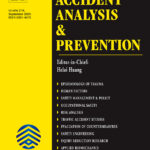
A paper titled Safety contributing factors analysis of older vulnerable road users: General and local perspectives authored by Xueyu Zhang, Xueson Wang, Mohamed Abdel-Aty, George Yannis and Guangzhu Luo has been published in Accident Analysis & Prevention. This paper utilizes an analytic approach to explore the effects of contributing factors for older vulnerable road users’ (VRUs) crashes, with particular attention to the integration of general and local analysis. Socio-economic, road network, public facility, traffic enforcement and older VRU crashes were collected in the grids and gradient tree-boosted Tweedie compound Poisson models as well as geographically weighted random forests were employed. The findings suggest that population and healthcare played an important role in predicting older VRU crashes. The concentration areas for older people, including healthcare facilities, markets, and bus stops, could be targeted to make safety improvements. Furthermore the proposed approach emphasizes that the countermeasures for improvement should be formulated based on the spatial distribution of the variable importance, that is, “adapt to local conditions”. 

NTUA has recently released the 2025 version of Key Road Safety Performance Indicators in Greece in the framework of the EU project Trendline. These KPIs are derived from nationwide field observations in 2025 on four key Road Safety Performance Indicators (KPIs): speed, seatbelt use, helmet use, and driver distraction. Key findings show that only 71% of vehicles on rural roads complied with speed limits (less than in 2022), seatbelt use among rear passengers remained as low as 57%, helmet use increased for both front (85%) and rear riders (60%) and mobile phone use increased on rural roads (12%). These results provide valuable evidence for targeted road safety interventions and the future alignment of Greece with national and EU safety targets. 

A paper titled Trajectory-based indicators to determine the local character of intersection conflicts: A micro-spatial analysis authored by Andreas Hula, Apostolos Ziakopoulos, Angel Losada, Andrea Schaub, Peter Saleh and George Yannis has been published in Accident Analysis & Prevention. This paper utilizes the Mobility Observation Box (MOB), which provides a flexible data collection to be used in subsequent video analysis. To facilitate potential MOB uses, this study leverages over 51 h of naturalistic video data at a busy Vienna intersection to advance road safety research, by employing random parameters binary modelling of the likelihood of critical conflict occurrence and Gaussian generalized additive spatial modelling to identify key factors influencing the absolute values of conflict angles on critical conflicts only. The findings suggest that all road user types were ultimately less likely to be involved in safety–critical conflicts compared to cars in both leading and following roles, with the exception of cyclists in the leading role. Within the micro-spatial analysis, the kinematic parameters of the second road user only (speed, max acceleration and max deceleration), the duration of the interaction as well as intersection-specific local effects related to the position of the leading road user were all found to influence the transformed absolute value of the angles of critical conflicts. 

A new book titled The Routledge Handbook of Sustainable Urban Transport edited by Lucy Budd, Stephen Ison and Maria Attard has been recently published. This Handbook offers a comprehensive exploration of urban transport sectors, as well as the challenges, impacts and issues being faced. Furthermore, this Monograph exploits technical, social and economic solutions for sustainable urban transport. NTUA actively contributed with the following chapter, co-authored by George Yannis and Eleonora Papadimitriou:

The United Nations Department of Economic and Social Affairs announced the first ever UN Decade of Sustainable Transport 2026 – 2035 starting in 2026. The Implementation Plan of the UN Decade of Sustainable Transport is expected to serve as a strategic framework to coordinate actions, mobilize resources, and monitor progress towards sustainable transport worldwide. It will be an opportunity to further raise awareness of transport’s crucial role in advancing the Sustainable Development Goals and to gather and rally new solutions, resources and partnerships to advance sustainable transport globally. Ensuring safety in sustainable transport is essential to protect lives, reduce crashes and build trust, resilience and reliable in transport systems. 



































































































































































